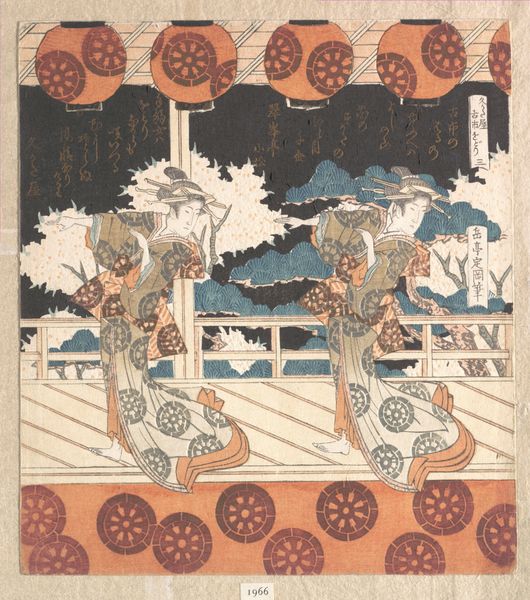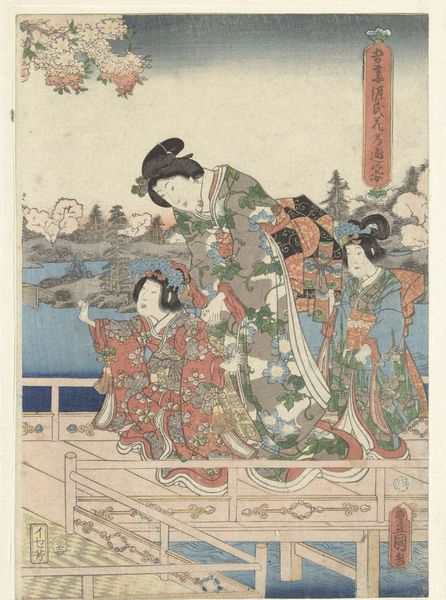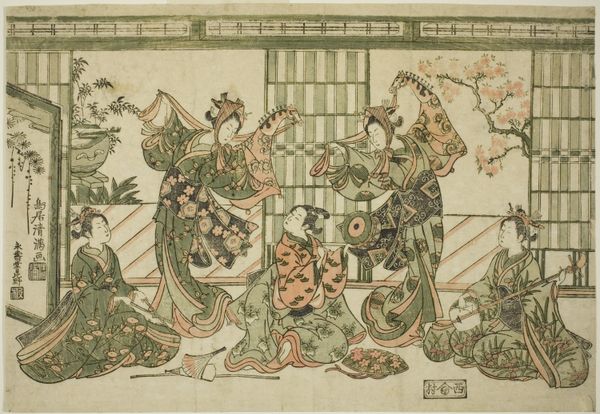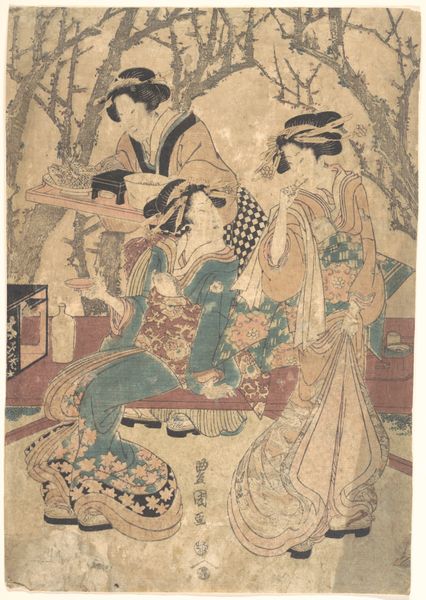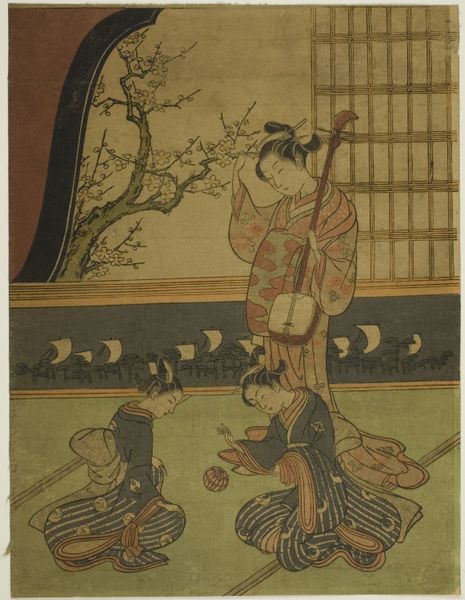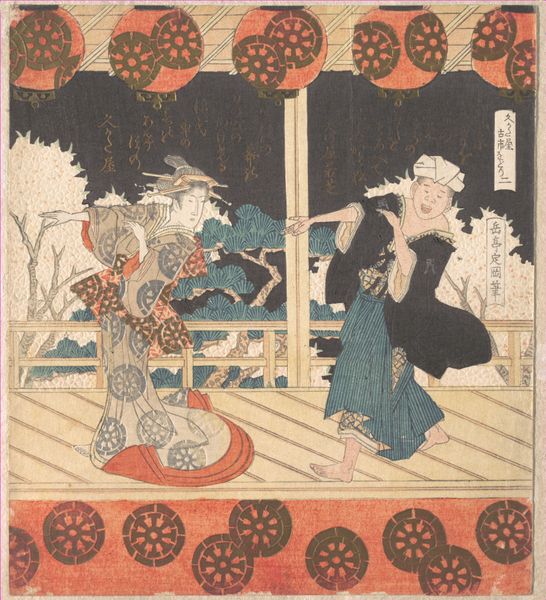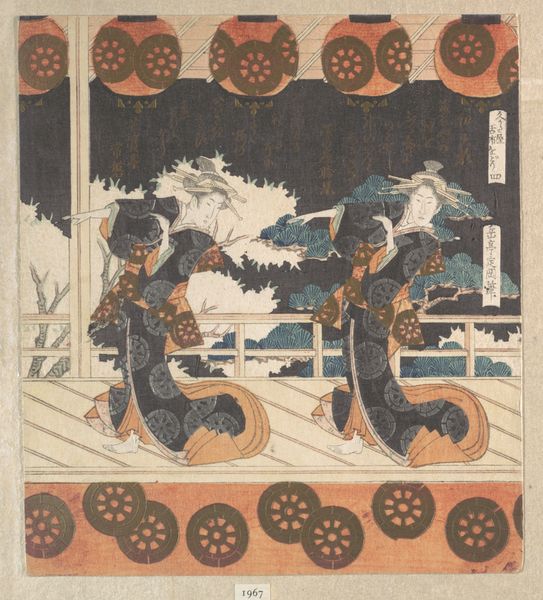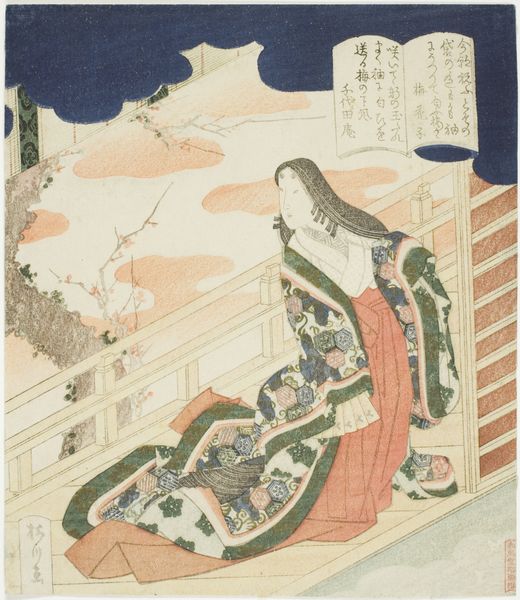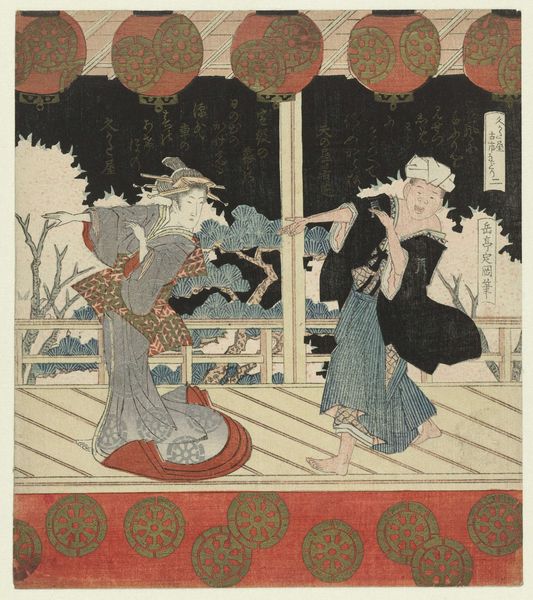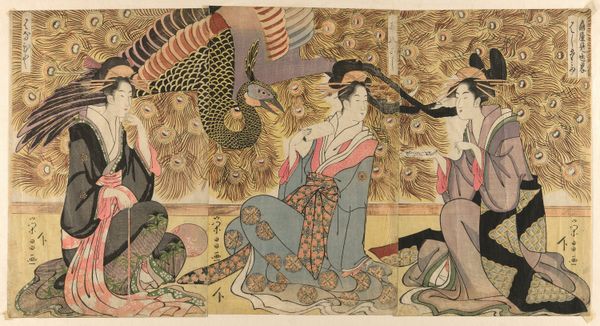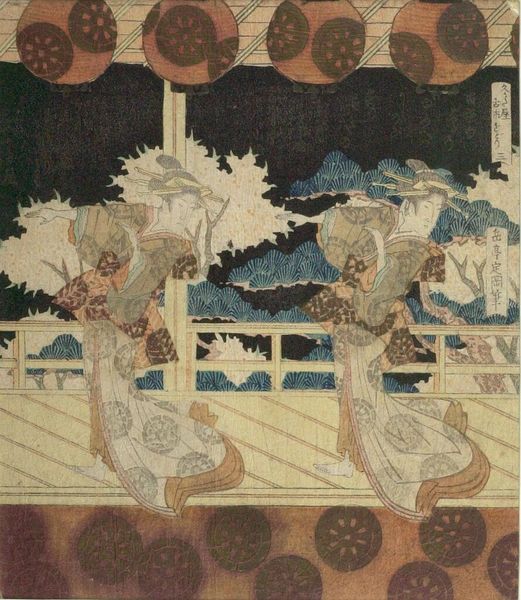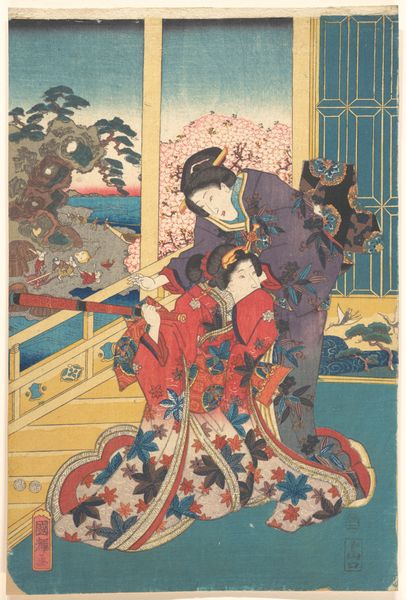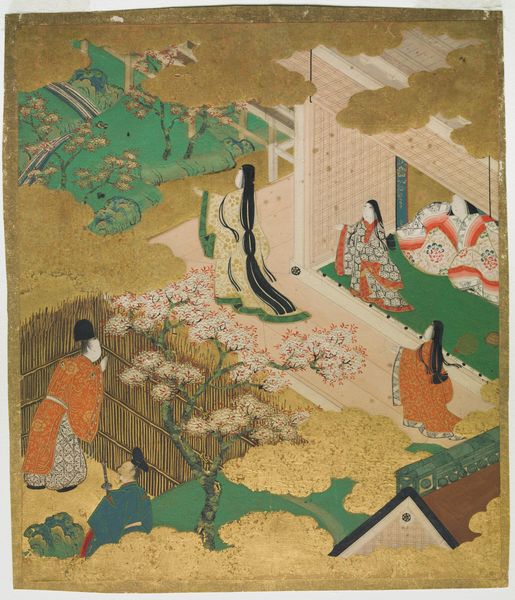
Furuichi Dance (No. 1 of a Set of Four) 19th century
0:00
0:00
print, woodblock-print
#
narrative-art
# print
#
asian-art
#
ukiyo-e
#
folk art
#
figuration
#
woodblock-print
#
genre-painting
Dimensions: 8 1/4 x 7 3/8 in. (21 x 18.7 cm)
Copyright: Public Domain
Curator: Looking at this captivating 19th-century woodblock print by Yashima Gakutei, titled "Furuichi Dance," part of a set of four, one immediately feels a sense of structured serenity. Editor: Serenity, yes, but a serenity deeply intertwined with societal constraints. The print captures a fleeting moment of entertainment, but who is afforded the opportunity for leisure? And under what circumstances? Curator: I would say, observe the precise, clean lines defining the figures, the interplay of geometric shapes in the lanterns versus the organic forms of the pine trees—there’s a compelling balance. And that repeating wheel motif; what are we to make of it? Editor: Those wheel designs and their relationship to class. Those who are stuck to a specific track laid out for them from which there is no deviation, as suggested by that dance? Who had control over the means of movement in the late Edo period is quite central to the narrative that's captured here. Curator: But consider how Gakutei employs color; the muted palette, with subtle variations in tone, creates a harmonious visual experience. It is, after all, one from a set of four; Gakutei creates movement through structured visual echoes. Editor: Harmony at what cost, though? Japanese woodblock prints such as this example frequently depict the courtesans, but it does so without interrogation, even reveling in exploitation. It perpetuates historical objectification, especially when displayed in museums like this today with hardly any consideration to how these stories are received. Curator: However, to dwell solely on that aspect overlooks Gakutei's sophisticated technique. It offers more than merely narrative content—observe, the texture, how Gakutei employs multiple blocks. Editor: That texture is still representing bodies, isn’t it? And representing certain ideas about gender, about the performances of subservience that women were forced into. And aren't the prints' display also about the dynamics of wealth and value—who decides what constitutes ‘art’? Curator: Still, the aesthetic dimension, to look, provides its own form of intellectual pleasure…a world complete unto itself, with the architecture and figures harmoniously proportioned… Editor: And that is a valid formal insight. Although I leave with the conviction that in engaging with works like "Furuichi Dance," the art isn't separate from the conditions that have shaped it and by which it also becomes powerful and resonant.
Comments
No comments
Be the first to comment and join the conversation on the ultimate creative platform.
